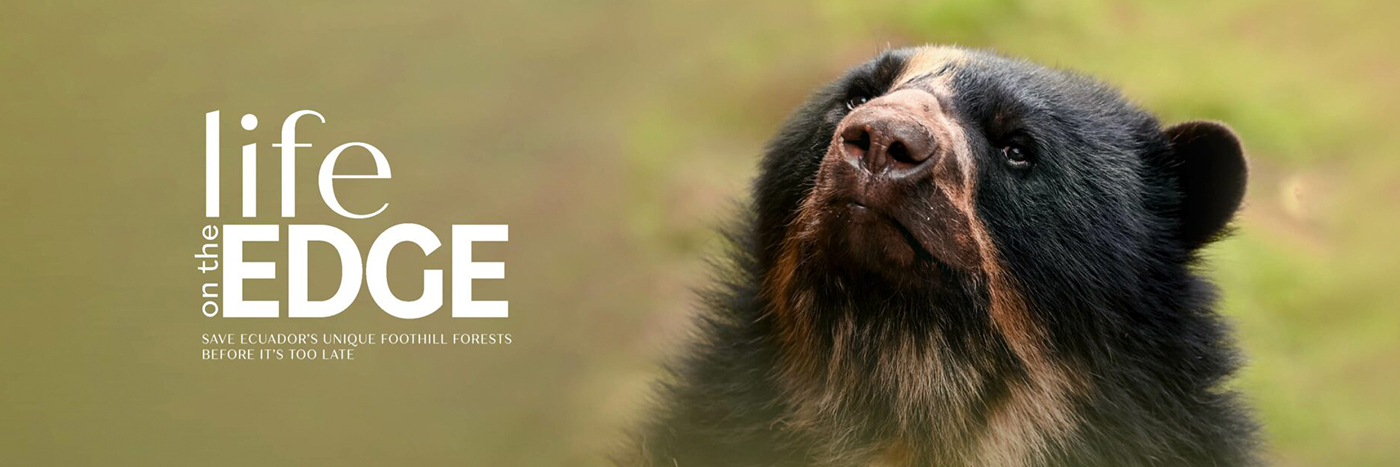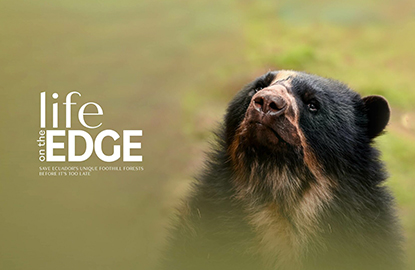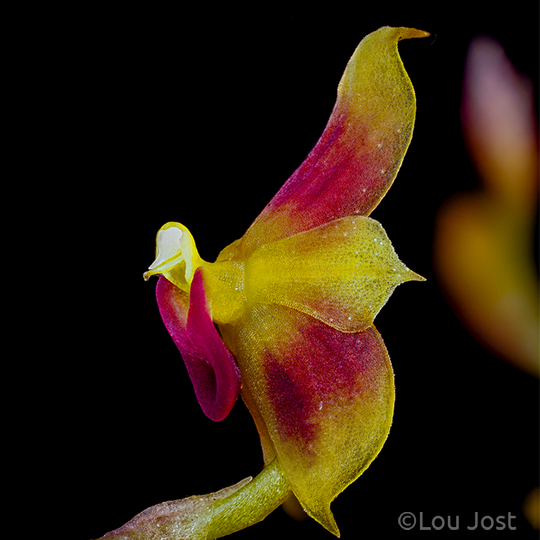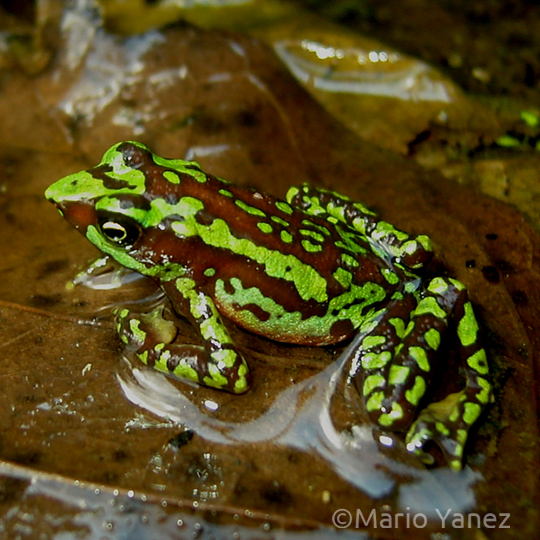



Thank you!
With your help we have raised our target of £1,430,000.
This means that our partner EcoMinga can double the amount of land protected by Anzu and Zúñac – connecting the reserves to a critical biological corridor and saving precious forest habitat from irrevocable damage.
Río Anzu and Río Zúñac are situated either side of the Cordillera Abitagua, a mountain range that lies on the edge of Ecuador’s eastern Andes, facing the largely flat Amazon Basin. Warm, moist Amazonian winds rise up and cool in the mountain air here, creating a nearly permanent cloud layer above 1700-1800m where unique species can thrive. The result, says EcoMinga President Lou Jost, is “an evolutionary island every bit as interesting as the Galapagos”.
In 2021, the world lost 3.75 million hectares of tropical primary rainforest – the equivalent of 10 football pitches every single minute. Important habitat in and around or project area continues to be degraded and destroyed, despite the high altitude and rugged terrain. At Río Zúñac, nearby forests are being cleared to make way for cattle pasture and fruit production. Most of the tall forests in the Río Anzu area have already been cut down for their valuable timber or replaced by plantations of cash crops like balsa wood, while the recent proposal of an oil extraction project presents yet another threat to the forests that remain.
With ziplines now making even the steepest slopes vulnerable to timber exploitation, we must act urgently to secure the unprotected land surrounding Anzu and Zúñac. Failing to do so could fatally isolate the plants and amphibians recently discovered here, and impact on the connectivity needed for roaming Jaguars, Mountain Tapirs and Spectacled Bears. In a place as biodiverse as this, the next hectare you save could be home to a species as yet unknown to science – a species that, without our help, could be lost forever.
With land prices in the region increasing, it is vital we fund EcoMinga’s proposed purchases now, before extractive industries claim the forests around Anzu and Zúñac. EcoMinga have already identified a 500 ha (1,235.5-acre) property that will connect a currently separated portion of Río Zúñac with the main body of the reserve, while also strengthening the reserve’s connection with Llanganates National Park.
The purchase of further properties will expand Río Anzu by 586 ha (1,448 acres) between 2022 and 2026, with the aim to form a single contiguous protected landscape with six separate nearby reserves. This would connect all these reserves with Llanganates for the first time, allowing wildlife to travel safely between Anzu and Zúñac, which sit either side of the national park.
This project will also see WLT join with EcoMinga’s other supporters, protecting a combined 1,173 ha (2,898 acres) at Río Anzu and 900 ha (2,224 acres) at Río Zúñac. This 2,073 ha (5,123 acres) will then form part of the wider Llanganates-Sangay Corridor that WLT has been supporting since 2007. This corridor is itself part of a vast network of protected areas that stretches along the Ecuadorian Andes, covering around 1.6 million ha (4 million acres) in total – nearly twice the size of Cyprus.

The upper Río Pastaza watershed is home to more endemic plant species than the Galapagos Islands. Located in the Tropical Andes, the most biodiverse of all the world’s 36 biodiversity hotspots, the watershed is also part of the most important Black-and-chestnut Eagle habitat in Ecuador, home to around 30 individuals – 15% of Ecuador’s entire population. This bird of prey is classified as an EDGE (Evolutionarily Distinct and Globally Endangered) species, alongside other Zúñac residents like the Mountain Tapir and Spectacled Bear.

Anzu, with its unusual limestone geology and combination of both Andean foothill cloud forest and Amazonian rainforest, is particularly rich in reptiles and amphibians (139 recorded species) and plants. EcoMinga have discovered an entirely new genus of orchid here, Quechua, and rediscovered other plants like the Critically Endangered Monopyle paniculate. In the area around the town of Mera, where Anzu is located, there are around 50 plant species found nowhere else on the planet. This is the kind of spectacular life you can save by helping us to expand the Anzu Reserve.

New species of frog, toad, orchid, magnolia, and melastome (a type of flowering plant) have all been discovered at Zúñac. A 2021 field trip to the reserve revealed five tree species new to science, four of which have a home range of just 8km² or less. By protecting surrounding forests, we can safeguard these unique endemic species, while also providing connectivity for threatened wide-ranging wildlife like the Jaguar, Bush Dog and Military Macaw.
WLT supporters have helped Fundación EcoMinga to safeguard around 7,000 ha (17,300 acres) of land in the upper Río Pastaza watershed since 2007. Our partner currently manages 10 reserves here, including Río Machay, the creation of which was funded by our 2015 Big Match Fortnight appeal, Forests in the Sky. Río Machay filled in the last gap in the Llanganates-Sangay Corridor, establishing a contiguous network of protected areas linking the two national parks for the first time.
EcoMinga have also been involved in WLT’s Keepers of the Wild programme since 2012. By funding rangers recruited from areas close to EcoMinga reserves, the programme ensures local people are invested in the protection of the landscape they know best – people like the Recalde family, who have been serving as rangers for EcoMinga since the organisation was founded in 2006. Fausto, Santiago and Darwin Recalde will be working as Keepers of the Wild in the newly expanded Río Zúñac, alongside their colleague Jordy Salazar.
Preserving habitats will benefit the landowners and community members who are working with EcoMinga to establish new ecotourism opportunities in the upper Río Pastaza watershed. EcoMinga are also supporting families who rely on sustainable small-scale agriculture, as another alternative to extractive industries in the area. Finally, as a supporter of this project, you’ll be directly advancing four UN Sustainable Development Goals. Keeping forests intact will help to prevent soil erosion, improving water security for local communities and increasing their resilience to climate-related disasters.


